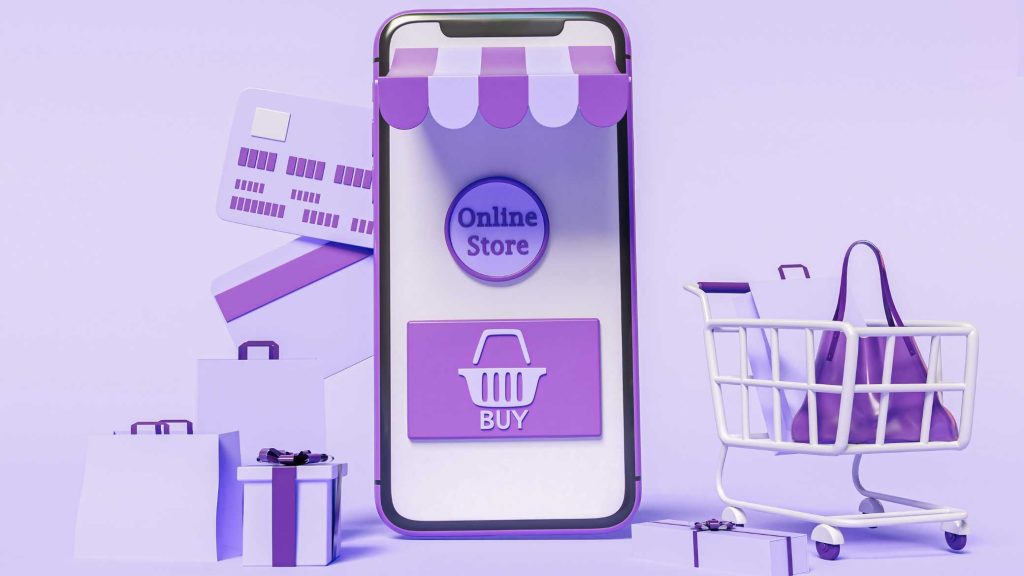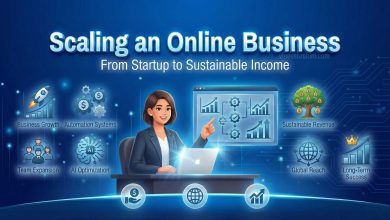Top E-commerce Business Models in 2025 : Comprehensive Guide
E-commerce Business Models : The e-commerce world is evolving faster than ever, and 2025 is proving to be a transformative year. With new technologies, changing consumer habits, and the global digital economy maturing, entrepreneurs are faced with endless opportunities—but also tough decisions. One of the most important choices you’ll make when starting or scaling your online store is selecting the right e-commerce business model.
Table of Contents
This decision affects everything from how you acquire products to how you fulfill orders and ultimately how you earn revenue. In this comprehensive guide, we’ll break down the top e-commerce business models in 2025, how each works, their pros and cons, and which type of entrepreneur they’re best suited for. Whether you’re launching a new store, pivoting an existing business, or simply exploring ideas, this guide will help you move forward with clarity. Choosing the wrong model can lead to fulfillment nightmares, poor margins, or even a complete business collapse. Choosing the right one, on the other hand, gives you clarity, direction, and the potential for scalable success.
1. Dropshipping: The Beginner’s Gateway to E-commerce

Dropshipping continues to be a popular entry point for new online entrepreneurs in 2025. It’s a low-risk, low-investment model that allows you to sell products without stocking any inventory yourself. You simply partner with a supplier who fulfills the orders on your behalf. You list products on your e-commerce site. When someone places an order, you forward it to your supplier.
Also Read : How to Build an Ecommerce Website Using Shopify
The supplier ships the product directly to the customer. The pros of this model include no need to buy inventory upfront, very low startup costs, and the ability to test new products or niches easily. However, it comes with lower profit margins, less control over shipping and product quality, and potential issues in customer service. This model is best suited for beginners who want to start with minimal capital and test markets quickly. It’s also great for influencers who want to monetize their audience with little hassle.
2. Private Labeling: Build a Long-Term Brand
Private labeling has gained major traction in recent years and is expected to be a dominant force in 2025. This model allows you to source generic products, customize them with your own branding, and sell them under your own name. You find a manufacturer who offers private labeling, create your branding including logo and packaging, and sell the product as your own, often at a premium.
Private labeling offers higher profit margins than dropshipping, stronger brand identity and customer loyalty, and more control over pricing and packaging. On the downside, it requires upfront investment in product and branding, more complex logistics, and full responsibility for the customer experience. It’s ideal for entrepreneurs looking to build a long-term brand, especially in niches like beauty, wellness, fashion, or lifestyle.
3. Print on Demand (POD): The Creative Entrepreneur’s Dream
Print on Demand is a powerful model in 2025 for creators, designers, and niche brands. POD lets you sell custom-printed products—like t-shirts, mugs, and phone cases—without ever touching inventory. You design a product, list it on your store, and once someone places an order, a POD supplier prints and ships the item.
The advantages include no upfront inventory cost, unlimited customization options, and ease in launching creative and seasonal campaigns. However, profit margins are lower, shipping can take longer, and you have limited control over product quality. This model is best for artists, designers, influencers, or anyone looking to monetize a following or brand through personalized products.
4. Affiliate Marketing: Monetize Without Owning Products
Affiliate marketing is unique among e-commerce models because you’re not selling anything directly—you’re promoting products and earning commissions for sales made through your links. You promote other people’s products via blogs, YouTube, social media, etc. A visitor clicks your link and makes a purchase, and you earn a commission. The benefits are that you don’t have to create or manage any products, it’s highly scalable, and there’s strong potential for passive income.
However, your revenue is heavily dependent on traffic, commissions can be low, and you rely on third-party platforms. It’s best for content creators, bloggers, YouTubers, and social media marketers who want to monetize their audience without managing products or logistics.
5. Wholesale E-commerce: Buy in Bulk, Sell for Profit

Wholesale e-commerce involves buying products in bulk at discounted prices and selling them individually online. You’ll need to handle storage, inventory, and fulfillment—but the upside can be substantial. You purchase products in large quantities from a wholesaler, store them in a warehouse or fulfillment center, and sell them individually through your site or marketplaces. Pros include higher profit margins, greater control over quality and logistics, and the ability to offer fast delivery. The downsides are high startup costs, risk of unsold inventory, and the need for solid logistics and operations. This model is best suited for experienced sellers or businesses with warehouse capabilities, especially in categories like electronics, tools, or bulk consumer goods.
6. Subscription-Based Commerce: Predictable Revenue, Loyal Customers
Subscription-based e-commerce is booming in 2025. From food boxes to beauty kits to digital services, this model offers recurring revenue and customer loyalty. Customers subscribe to receive products or services on a recurring basis—monthly, quarterly, or per schedule. The major pros are predictable income, strong brand loyalty, and high customer lifetime value. The cons include challenges in subscriber retention, complex logistics, and the need for regular product or content innovation. This model is best for brands in health, wellness, food, grooming, or digital tools. It thrives on personalization and community engagement.
7. White Labeling: Quick to Launch with Lower Costs
White labeling is similar to private labeling but often involves taking an existing product and simply putting your brand on it without many modifications. You find a white-label product, customize the branding (label/logo), and market it as your own. This model is fast to market, has lower R&D and production costs, and works well for trending niches. However, there’s little product uniqueness, and you’re tied to the manufacturer’s product quality. It’s competitive if others are selling the same item. It’s best for entrepreneurs testing new niches, influencers launching branded products, or local businesses looking to expand online.
8. Direct-to-Consumer (DTC): Cut the Middleman, Own the Customer
Direct-to-Consumer (DTC) e-commerce eliminates middlemen by selling directly through your own website. This model is especially hot in 2025 due to changing consumer trust and the rise of brand-first shopping. You build your own online store, market directly to consumers, and fulfill orders using in-house or third-party logistics. Advantages include full control over brand experience, higher margins than retail, and access to direct customer data. Challenges include the need for strong digital marketing skills, managing everything from ads to customer service, and a higher initial workload. This model is perfect for brand-focused entrepreneurs, startups, and businesses looking to own their entire customer journey.
9. Marketplace Selling: Use Amazon, Flipkart, and Etsy to Scale
Marketplace selling allows you to tap into established platforms like Amazon, Flipkart, or Etsy. These marketplaces are more powerful—but also more competitive—in 2025. You create a seller account, list your products, and manage pricing. The platform handles traffic, and you manage fulfillment or use services like Fulfilled by Amazon (FBA). Benefits include a huge built-in audience, trust and credibility, and the ability to scale quickly. However, you’re subject to platform rules and fees, face high competition, and have limited brand identity. This model works best for product-based businesses wanting to test demand or supplement a DTC strategy.
10. Freemium + Premium: Ideal for Digital and SaaS E-commerce
Freemium + Premium is a hybrid model tailored for digital e-commerce—like apps, tools, or software. It offers a free version to attract users and then upsells them on premium features. You offer basic access for free and monetize through subscriptions, upgrades, or unlockable features. This model supports mass user acquisition, recurring revenue through subscriptions, and community-driven growth. Its downsides are the need for ongoing product updates, high development and support costs, and a potentially low conversion rate from free to paid users. It suits app developers, tool creators, software startups, educators, and digital product designers.
Key Trends Impacting E-commerce Models in 2025
As you evaluate these business models, it’s essential to understand the broader trends shaping them in 2025. Mobile-first shopping is no longer optional—most shoppers now make purchases via smartphones, making mobile UX and fast checkout processes absolutely essential. AI and automation are transforming operations, from smart product recommendations to AI chatbots and automated supply chains, making it easier to scale and personalize.
Sustainable shopping is a top priority for modern consumers, and eco-friendly packaging, ethical sourcing, and brand transparency are driving purchase decisions. Voice and visual search are on the rise, so optimizing your products for voice commands and image recognition can give you a competitive edge. Finally, creator commerce is booming, with influencers and content creators launching microbrands using POD, affiliate links, or white-labeled products. This trend is expected to keep growing.
E-commerce Business Models – Conclusion :

There’s no one-size-fits-all when it comes to e-commerce business models in 2025. Each model comes with unique challenges, but also massive opportunities. The best approach is to align your strengths, resources, and market insights with a model that supports your goals.
Buy Now : Ecommerce Website With 100 Products
Are you a beginner with limited capital? Dropshipping or affiliate marketing may be your best bet. Have some creative skills? Try print-on-demand or private labeling. Looking to build a powerful, long-term brand? Go the DTC or subscription route. Take time to understand your market, research your competitors, and start small—then scale smart.
Keywords : E-commerce Business Models – E-commerce Business Models 2025 – E-commerce Business Models new, E-commerce Business Models list



